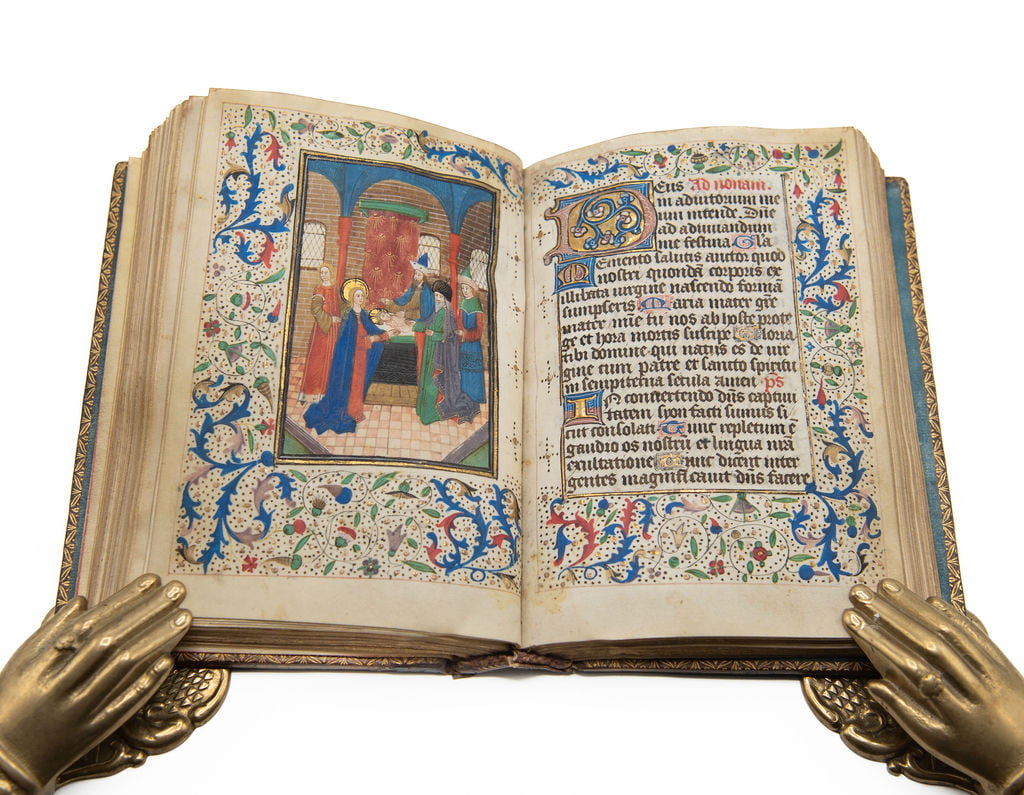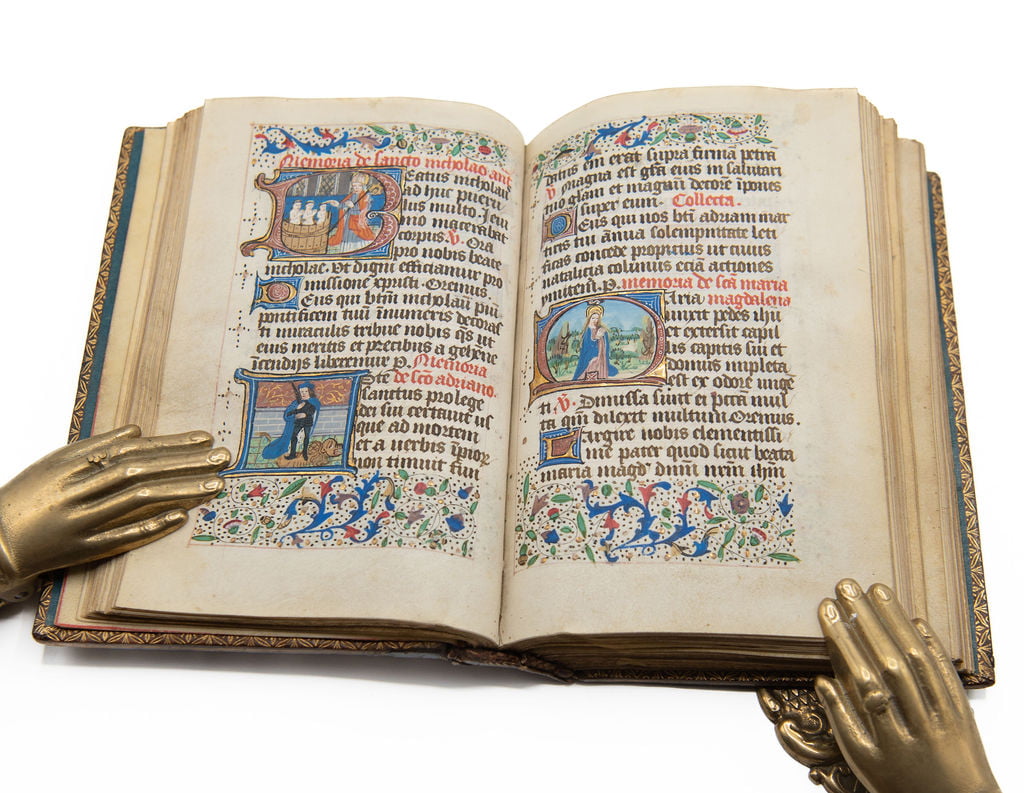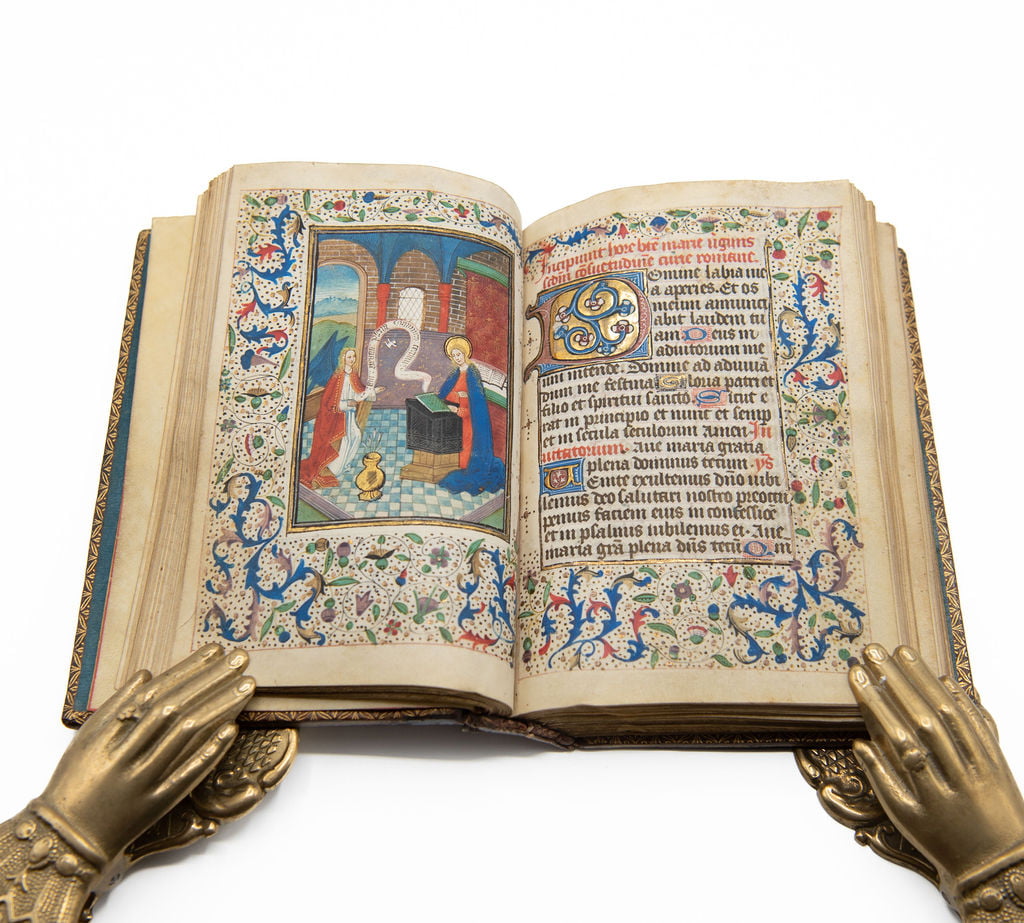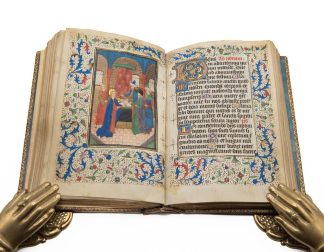BOOK OF HOURS
Use of Rome, in Latin, illuminated manuscript on vellum
Low Countries, (probably Bruges), c. 1460£65,000.00
178 by 120mm., 123 leaves (plus 1 paper and 2 vellum endleaves at front and back), uncollatable but with probably only two single leaves wanting (those once with the miniatures opening Lauds and Terce in the Hours of the Virgin), some miniatures bound in on singletons, single column, 20 lines in an angular late gothic bookhand, red rubrics, small initials in liquid gold on spiky blue or pink grounds heightened with white penwork, larger initials in burnished gold on pink and blue grounds, often with sprays of tri-lobed flowers touched in pink or blue, or pink or blue enclosing foliate sprays and on brightly burnished gold grounds, seven historiated initials (in the Suffrages for the Saints), nine full-page rectangular miniatures with full borders of acanthus leaves, single line foliage and flowers set on blank vellum with numerous bezants, some small scuffs and spots, but overall in good condition, bound in eighteenth-century calf over pasteboards, gilt-tooled with two concentric frames (the inner with floral sprays at corners) on each board, spine similarly tooled with floral compartments, gilt-edge and gauffered, joints cracked, but sound, preserved in slipcase.
The volume comprises: a Calendar (fol. 1r); the Hours of the Cross (fol. 7r); the Hours of the Holy Spirit (fol. 13r); a mass for the Virgin (fol. 16v), followed by the Passion Readings, the Obsecro te (fol. 23v) and O intemerata (fol. 25v); Suffrages to the Saints (fol. 27v); the Hours of the Virgin (fol. 52r), followed by variations for the Church year; the Seven Penitential Psalms (fol. 83r) followed by a Litany; the Office of the Dead (fol. 96r) and prayers.
The large miniatures are: 1. The Crucifixion; 2. Pentecost with the Virgin seated with her back to us gazing to heaven out of an archway, surrounded by followers; 3. The Annunciation to the Virgin, in which she kneels in her bower before her prie-deu with a closed book in a green binding; 4. The Nativity, with the Virgin and Joseph either side of an angel adoring the Child in a grassy area before the stable; 5. The Adoration of the Magi; 6. The Presentation in the Temple; 7. The Massacre of the Innocents; 8. The Flight into Egypt; 9. King David kneeling at a window and beholding God in the heavens; 9. A Funeral, with priests and hooded mourners.
Provenance:1. Produced for a patron from the Low Countries, most probably from Brussels: with SS. Medard (bishop of Noyon, 8 June), Hubert (bishop of Liège, 3 November) in Calendar, and Armand (father of Belgian monasticism) in the Litany, and crucially Gudula (an extremely rare female saint, born in seventh-century Flemish Brabant, who died and was buried at Hamme in that region, and whose relics were later removed to the church of St. Salvator in Moorsel, and again in the late tenth century to the chapel of Saint Gaugericus at Brussels, where they remained until 1579 when the church was attacked and pillaged by Protestants and the relics dispersed) in Calendar and Litany (the feast in Calendar in early July, perhaps in error for 8 January).2. Nineteenth-century printed sale ticket in French (lot or no. ‘34’) on front pastedown.3. Sale description enclosed, issued by The Halle Bros. Co. (perhaps the defunct Cleveland, Ohio, department store, who focussed on luxury goods and personal service) in first-half of the twentieth century.In stock






